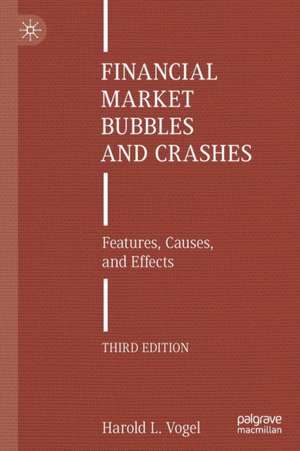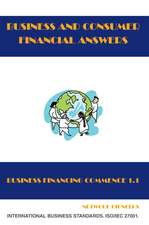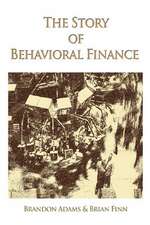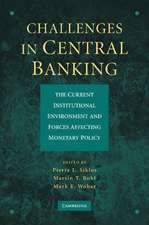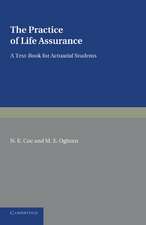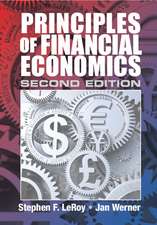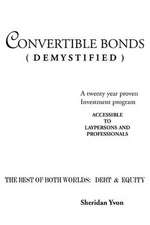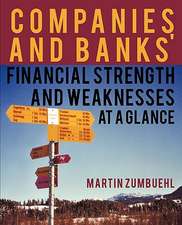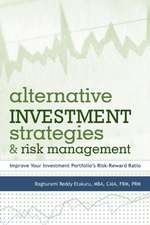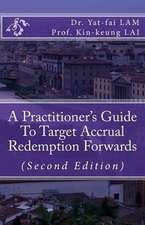Financial Market Bubbles and Crashes: Features, Causes, and Effects
Autor Harold L. Vogelen Limba Engleză Paperback – 19 dec 2022
| Toate formatele și edițiile | Preț | Express |
|---|---|---|
| Paperback (1) | 366.91 lei 3-5 săpt. | +36.26 lei 6-12 zile |
| Springer International Publishing – 19 dec 2022 | 366.91 lei 3-5 săpt. | +36.26 lei 6-12 zile |
| Hardback (2) | 273.22 lei 6-8 săpt. | +43.03 lei 6-12 zile |
| Springer International Publishing – 18 dec 2021 | 529.63 lei 3-5 săpt. | +43.03 lei 6-12 zile |
| Cambridge University Press – 13 dec 2009 | 273.22 lei 6-8 săpt. |
Preț: 366.91 lei
Preț vechi: 442.06 lei
-17% Nou
Puncte Express: 550
Preț estimativ în valută:
70.21€ • 72.54$ • 58.41£
70.21€ • 72.54$ • 58.41£
Carte disponibilă
Livrare economică 27 februarie-13 martie
Livrare express 12-18 februarie pentru 46.25 lei
Preluare comenzi: 021 569.72.76
Specificații
ISBN-13: 9783030791841
ISBN-10: 303079184X
Pagini: 579
Ilustrații: LIV, 579 p. 79 illus., 30 illus. in color.
Dimensiuni: 155 x 235 x 41 mm
Greutate: 0.88 kg
Ediția:3rd ed. 2021
Editura: Springer International Publishing
Colecția Palgrave Macmillan
Locul publicării:Cham, Switzerland
ISBN-10: 303079184X
Pagini: 579
Ilustrații: LIV, 579 p. 79 illus., 30 illus. in color.
Dimensiuni: 155 x 235 x 41 mm
Greutate: 0.88 kg
Ediția:3rd ed. 2021
Editura: Springer International Publishing
Colecția Palgrave Macmillan
Locul publicării:Cham, Switzerland
Cuprins
1. Introduction.- 2. Bubble Stories.- 3. Crash Stories .- 4. Money and Credit Features.- 5. Random Walks.- 6. Rationality Rules.- 7. Behavioral Beats.- 8. Bubble Dynamics.- 9. Behavioral Risk Features.- 10. Estimating and Forecasting.- 11. Financial Asset Bubble Theory.
Notă biografică
Harold (Hal) L. Vogel was the senior entertainment industry analyst at Merrill Lynch and inducted into Institutional Investor magazine’s All-America Research Team Hall of Fame in 2011. Holder of a PhD in financial economics, he is also a chartered financial analyst (C.F.A.) and served as an adjunct professor at Columbia University’s Graduate School of Business. His books include Entertainment Industry Economics: A Guide for Financial Analysis (10th edition 2020) and Travel Industry Economics: A Guide for Financial Analysis (4th edition 2021). He currently heads an independent investment and consulting firm in New York City.
Textul de pe ultima copertă
Economists broadly define financial asset price bubbles as episodes in which prices rise with notable rapidity and depart from historically established asset valuation multiples and relationships. Financial economists have for decades attempted to study and interpret bubbles through the prisms of rational expectations, efficient markets, equilibrium, arbitrage, and capital asset pricing models, but they have not made much if any progress toward a consistent and reliable theory that explains how and why bubbles (and crashes) evolve and are defined, measured, and compared. This book develops a new and different approach that is based on the central notion that bubbles and crashes reflect urgent short-side rationing, which means that, as such extreme conditions unfold, considerations of quantities owned or not owned begin to displace considerations of price.
Harold (Hal) L. Vogel was the senior entertainment industry analyst at Merrill Lynch and inducted into Institutional Investor magazine’s All-America Research Team Hall of Fame in 2011. Holder of a PhD in financial economics, he is also a chartered financial analyst (C.F.A.) and served as an adjunct professor at Columbia University’s Graduate School of Business. His books include Entertainment Industry Economics: A Guide for Financial Analysis (10th edition 2020) and Travel Industry Economics: A Guide for Financial Analysis (4th edition 2021). He currently heads an independent investment and consulting firm in New York City.
Harold (Hal) L. Vogel was the senior entertainment industry analyst at Merrill Lynch and inducted into Institutional Investor magazine’s All-America Research Team Hall of Fame in 2011. Holder of a PhD in financial economics, he is also a chartered financial analyst (C.F.A.) and served as an adjunct professor at Columbia University’s Graduate School of Business. His books include Entertainment Industry Economics: A Guide for Financial Analysis (10th edition 2020) and Travel Industry Economics: A Guide for Financial Analysis (4th edition 2021). He currently heads an independent investment and consulting firm in New York City.
Caracteristici
Provides wide-ranging and thorough examples and explanations of how and why bubbles and crashes have historically developed and are tied to money, credit, trust, psychology, risk preferences, behavioral and structural aspects, and social mood Covers the role of central banks and the relationship to commercial lending Presents a new descriptive theory and practical empirical approach to the measurement, analysis, and prediction of extreme financial market conditions Serves as a handy scholarly reference for further studies via extensive surveys of previous academic research and history and updates through the 2020 virus-related crash and remarkable rebound
Recenzii
'This book looks at bubbles more deeply than any other. Recommended for anyone who follows finance or is interested in the roots of the financial crisis.' Tyler Cowen, George Mason University
'This outstanding book is an essential starting point for anyone seeking to understand the economics of bubbles as they exist in the real world.' Bruce Greenwald, Columbia Business School
'Financial market bubbles and crashes have long been the pauper parent of financial economics. By proposing an inspiring conceptual foundation spanning academic financial economics, professional management, and elements of complexity theory, Harold Vogel is rising to the challenge. The book attacks arguably the most difficult and controversial open problem, namely the diagnostic of bubbles, by developing promising bubble strength indicators. I predict that this type of research is going to thrive in the future and will lead to profound reassessments of our understanding on the stability of financial markets and of systemic risks.' Didier Sornette, ETH Zurich, Financial Crisis Observatory, Swiss Finance Institute, and co-founder of the Competence Center for Coping with Crises in Socio-Economic Systems
'Hal Vogel's book is fascinating and useful. It is accessible to the interested layperson, and its first part provides a readable refresher course on finance and financial history for the specialist. The second part contains some novel empirical approaches and results that give much food for thought. Taken as a whole, the book is both educational and a pleasure to read.' Geoffrey E. Wood, City University
'[This] book is useful not only for trained economists but also for anyone seeking to understand the extreme events in finance and economics.' Zentralblatt MATH
'… the intent of this study to conduct an exploration and analysis that might eventually lead to a robust, unified general theory applicable to all types and sizes of asset-price bubbles is more than welcome. … the book is easily accessible and provides an exciting introduction into this up-to-date topic. … a readable introduction into an exciting and relevant topic.' Journal of Economics and Statistics
'This outstanding book is an essential starting point for anyone seeking to understand the economics of bubbles as they exist in the real world.' Bruce Greenwald, Columbia Business School
'Financial market bubbles and crashes have long been the pauper parent of financial economics. By proposing an inspiring conceptual foundation spanning academic financial economics, professional management, and elements of complexity theory, Harold Vogel is rising to the challenge. The book attacks arguably the most difficult and controversial open problem, namely the diagnostic of bubbles, by developing promising bubble strength indicators. I predict that this type of research is going to thrive in the future and will lead to profound reassessments of our understanding on the stability of financial markets and of systemic risks.' Didier Sornette, ETH Zurich, Financial Crisis Observatory, Swiss Finance Institute, and co-founder of the Competence Center for Coping with Crises in Socio-Economic Systems
'Hal Vogel's book is fascinating and useful. It is accessible to the interested layperson, and its first part provides a readable refresher course on finance and financial history for the specialist. The second part contains some novel empirical approaches and results that give much food for thought. Taken as a whole, the book is both educational and a pleasure to read.' Geoffrey E. Wood, City University
'[This] book is useful not only for trained economists but also for anyone seeking to understand the extreme events in finance and economics.' Zentralblatt MATH
'… the intent of this study to conduct an exploration and analysis that might eventually lead to a robust, unified general theory applicable to all types and sizes of asset-price bubbles is more than welcome. … the book is easily accessible and provides an exciting introduction into this up-to-date topic. … a readable introduction into an exciting and relevant topic.' Journal of Economics and Statistics
Descriere
Descriere de la o altă ediție sau format:
This book explains how and why financial bubbles and crashes occur.
This book explains how and why financial bubbles and crashes occur.
